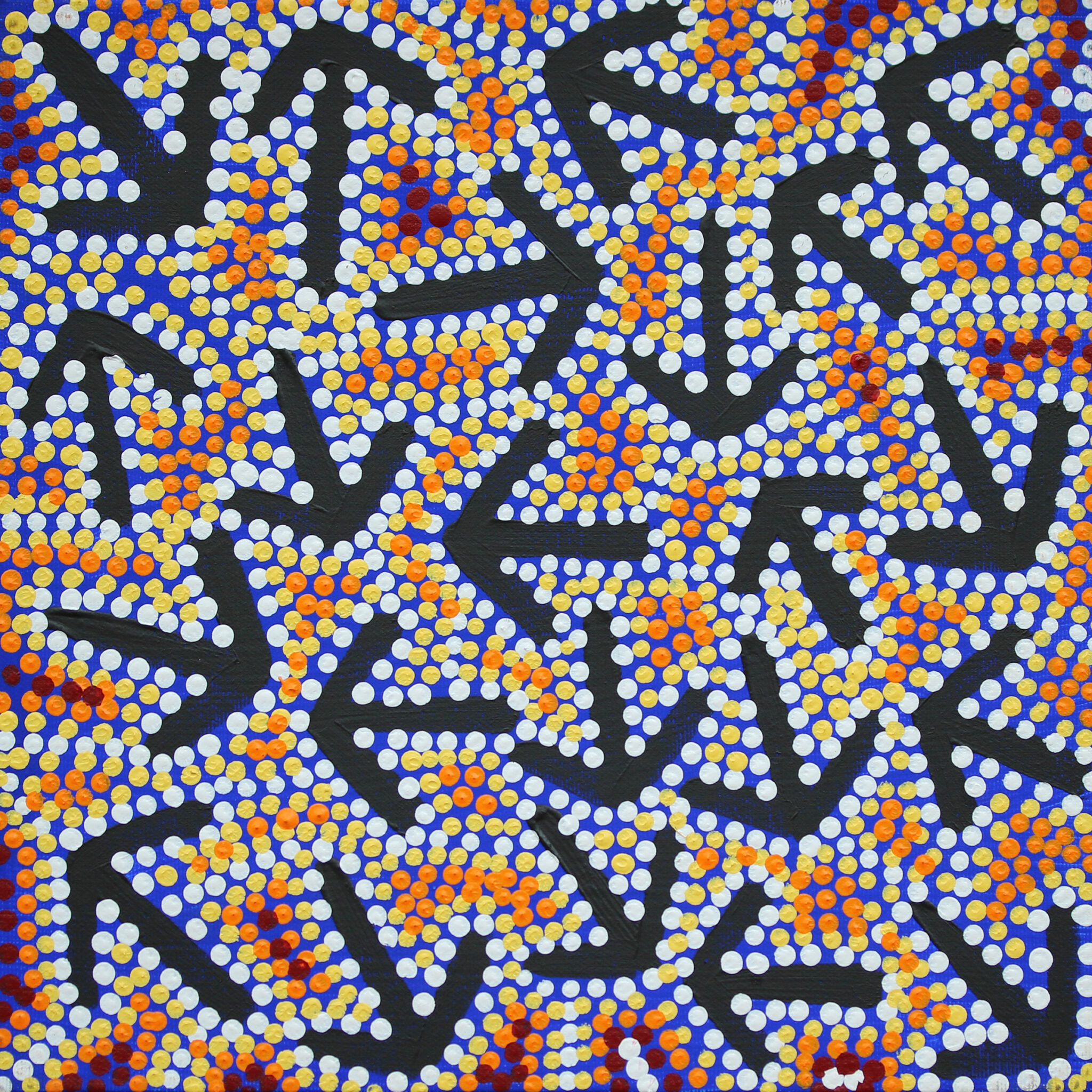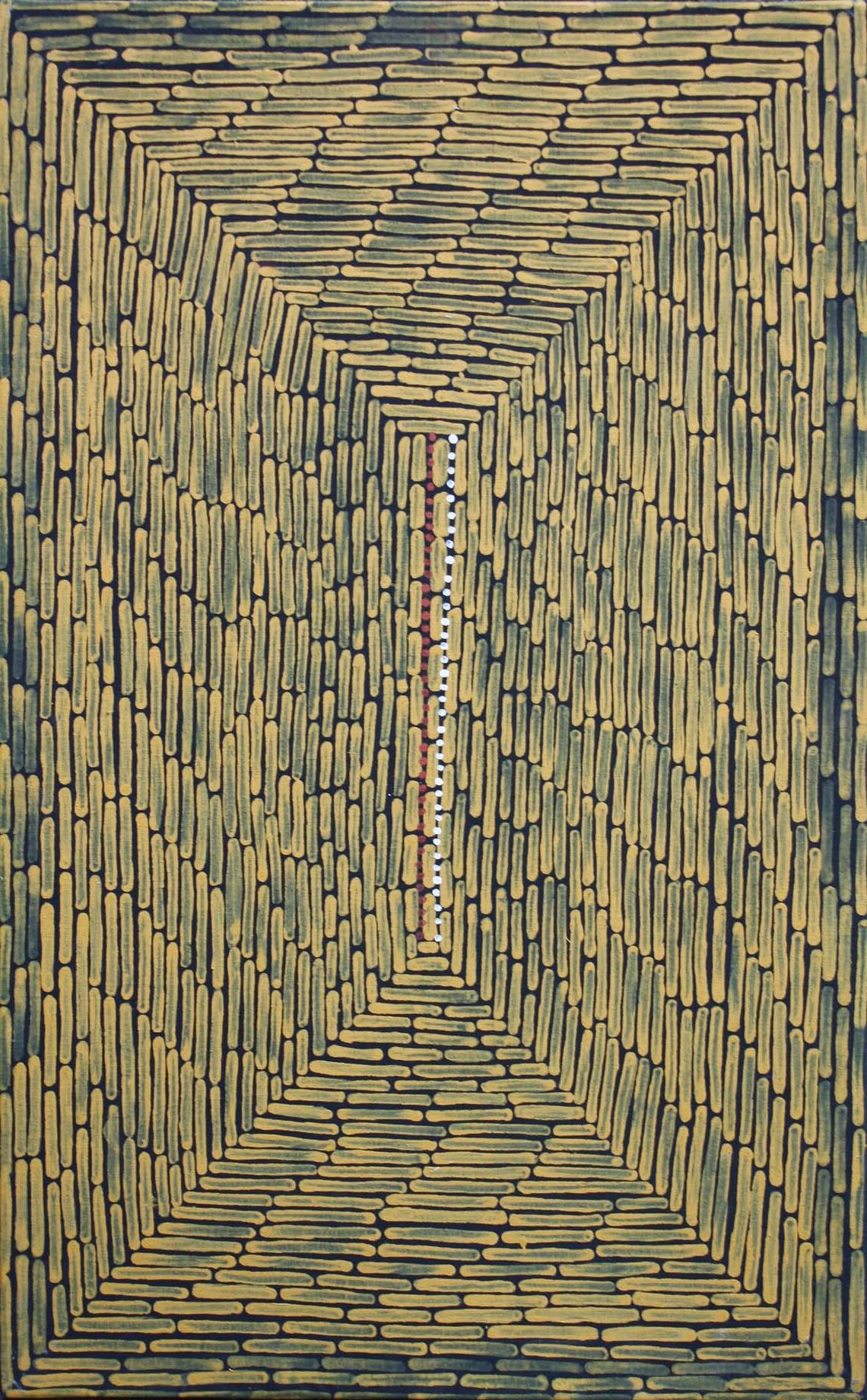Serial:
Size:
$5,680 (tax inc.)
SOLD
The story:
Tasmanian Aboriginal people would travel to the high country and meet at these cider gum sites. The trunk of the tree, if slashed, exudes a sap that ferments and was used by Aboriginal people in ceremony. Circular tracks were worn down, like moats, around these trees by many thousands of footsteps over time. Mick shows the tracks to these trees from different directions. Wikipedia reference to this highland eucalyptus is at http://en.wikipedia.org/wiki/Eucalyptus_gunnii. o In his journal for 28 November 1831, at Lake Echo, George Augustus Robinson writes: “The natives caught seven kangaroo this evening, but what interested me the most were the numerous cider trees which skirted this extensive plain and which were the first I had seen. Most of those trees had been tapped by the natives. This they had effected by perforating a hole in the tree a short distance above the ground by means of sharp stones and then making a hole at the bottom of the tree into which the liquid is conveyed and from which they extract it, sometimes if the hole is small by sucking it through a reed or twisted bark. In some of those holes I observed upwards of a quart of this juice and which my people greedily partook of. It is exceeding sweet and well flavoured and in this respect resembles the flavour of cider. Some that had been dried by the sun had an apple taste. The tree in appearance resembles the blue gum, but the leaf when closely inspected has a different form and the bark is more of a dark blue colour. This tree grows to a large size; the wood appears brittle. The natives are very fond of the juice and I am told it frequently makes them drunk.”
Related artwork:
Related products
-
29 Hunter St, Hobart 7000,
Tasmania, Australia - +61 3 6236 9200
- euan@artmob.com.au
Cash – locally only – up to $10,000 only. Layby facilities available. Card details can be advised securely using WhatsApp.
© Art Mob Pty Ltd, Aboriginal Fine Art Dealer, all rights reserved.



